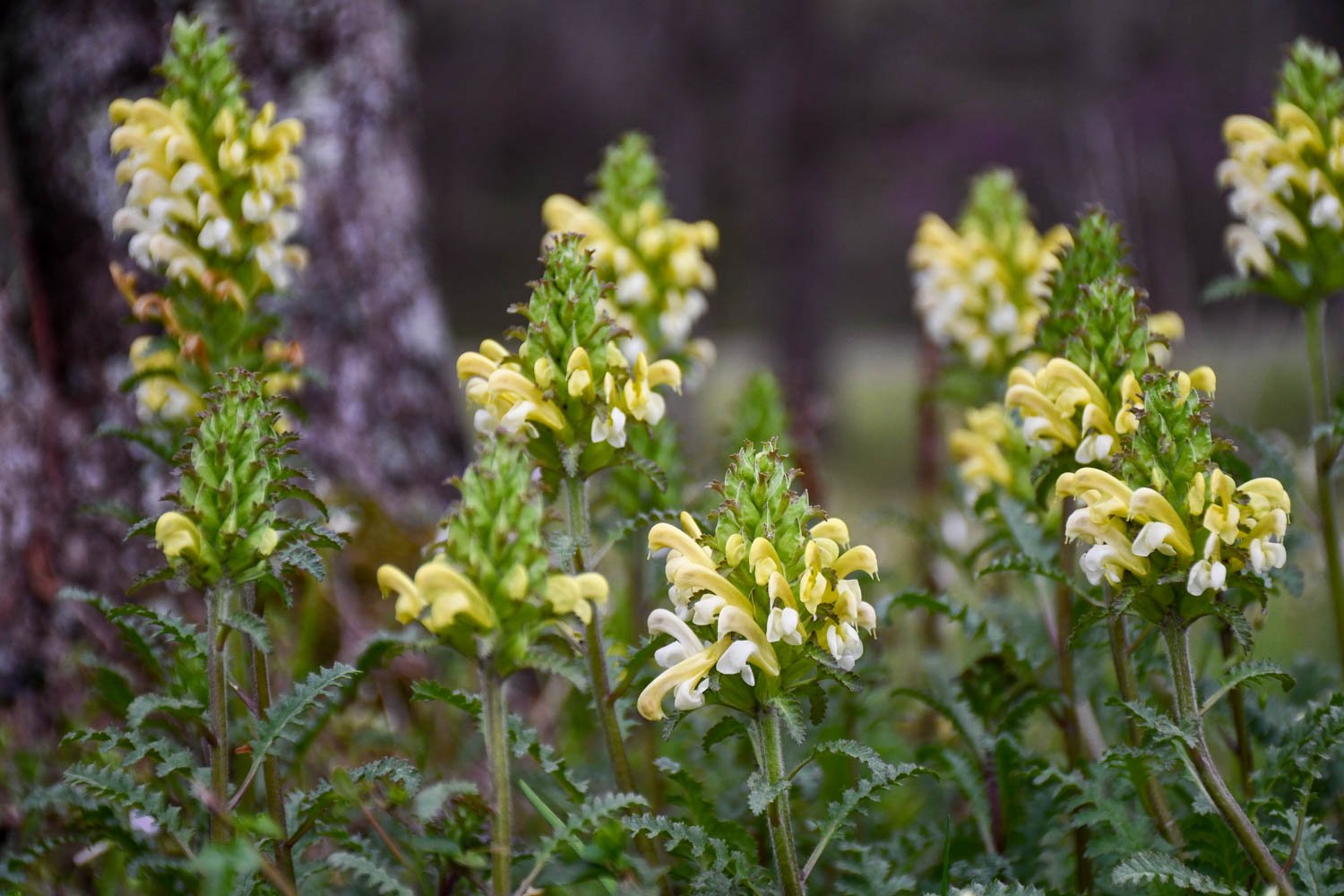It is April, and a myriad of greens have replaced the drab browns outside our kitchen window. It’s a color I haven’t seen in abundance in some time, and my mind’s eye begins to sort them. It’s not just plants, either. Even our driveway sports a verdant color this time of the year with the coating of pine pollen.
In the orchard glaucous-green Baptisia alba shoots pierce from the ground. The ancient water oak on the west corner of our property is clothed in a muddy-green from all the catkins hanging from the branches. There’s the fading red-green of the spring beauties as they wrap up their almost four-month floral display to go dormant again until next year. I also spy the moss-green blades of Leucojum aestivum ‘Gravetye Giant’, dotted with with flowers above the tips.
And, there’s the chartreuse Pedicularis canadensis growing under our large white fringetree. Or, at least it appears chartreuse from this distance. Upon closer inspection, the colors separate out. The bloom is a soft yellow that fades white on the lower lip, and the developing buds are light green. But, from here, the colors in wood betony’s blooms blend together to a hue between yellow and green and together brighten the shade underneath the Chionanthus virginicus. The tree’s swelling buds nearly match the color of the flowers beneath.
In growing it I’ve learned just how interesting this little native is. Last year, the clump only had a few blooms. But, this spring it has started to show off. At first there was one, and then two more, and now I count at least 40 inflorescences on this 2 × 2 foot clump that’s taking hold in the shade. I suppose it is following the perennial rule of leaping in the third year. And, other clumps are beginning to appear nearby. It seems happy, as am I.
The first Pedicularis canadensis I ever saw had more red coloring in the flowers. I’ve since learned their colors can be variable in the wild.
It’s as if the flower is caught in mid twirl and making Pedicularis pinwheels.
For me it brings back memories of visiting Greenbriar campground in the Smoky Mountains. Over the roar of the Little Pigeon River, I had my first encounter with Pedicularis. I crouched to look at these curious red-and-yellow flowers growing on a grassy knoll under the shade of the emerging foliage in the forest above. Looking at it from the top, I noticed how all the flowers have a slight bend to the right and appear as mini pinwheel galaxies held above feathery foliage.
My first encounter with Pedicularis here in east Texas was also in a forest. Or, what used to be a forest. I found a large mass of yellow wood betony alongside a clear cut and decided to save some from their recent introduction to full sun exposure. I’ve learned in transplanting these that they don’t move well as single pieces much like a yarrow or mountain mint would.
No, Pedicularis is best moved in sheets of shoots and roots, perhaps because of its leaching tendencies. A peculiar aspect of this plant is that it is a hemiparasite, as are many other members of the Orobanchaceae family. It not only can photosynthesize but also is able to rob surrounding plant roots of water, nutrients, and possibly even sugars.
In an interesting flip of expectations, research has shown that Pedicularis canadensis actually increases the number of species in prairies. One might think a parasite would cause them to dwindle. However, the theory is that because wood betony is a hemiparasite, it checks the growth of more vigorous competitors like Solidago or grasses on a site and thus allows other species to naturally develop.
One last note on its peculiarity. While I much prefer the common name wood betony for the inflorescence’s similarity to Stachys, it also goes by the name Canadian lousewort. Farmers in Europe thought that Pedicularis in meadows would give sheep lice. The Latin pediculus even means louse.
Well, I can attest that I don’t have lice from growing this wonderful native. No, it’s just a great plant to provide another shade of green in the garden.


